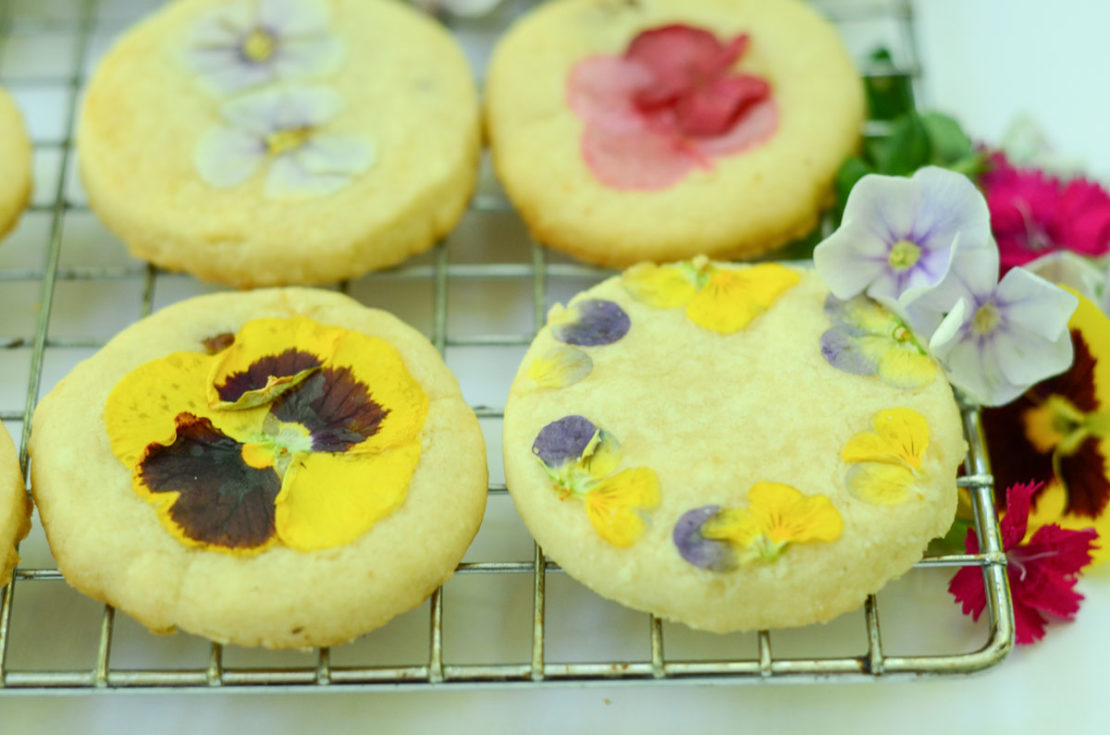
Floral Cookies to Celebrate the Summer Solstice (+Video!)
Many herbalists find deep meaning in connecting with nature and embracing the seasons. Special holidays and natural occurrences mark time and allow us to acknowledge and appreciate the gifts nature provides.The summer solstice is one such event, and herbal lore and traditional wisdom have left us with a multitude of ways to celebrate this annual astronomical event, from lighting a sacred candle to crafting seasonal recipes, like floral cookies (recipe below).
What is the Summer Solstice?

The summer solstice is the longest day and shortest night of the year. Often considered the beginning of summer, the summer solstice is a time of great energy and connection to light. In the Northern Hemisphere, the summer solstice is the day in which the earth tilts its north pole furthest toward the sun (about 23.5 degrees). As a result, we experience more hours of daylight than any other day of the year. Depending on one’s location in relationship to the equator, sunlight can last from 12 to 24 hours! Some cultures refer to this event as “midsummer” because it demarcates the middle of the growing season.
The word “solstice” comes from the Latin word solstitium. Sol refers to the sun and stitium means still or stopped. This word artfully describes how the sun appears to pause in the sky (Old Farmer’s Almanac, 2020).
In 2020, the summer solstice will occur in the Northern Hemisphere on June 20. (It occurs on December 22 in the Southern Hemisphere). The date is slightly different each year, but is generally between June 20-22 and is marked by when the sun reaches its “northernmost point from the equator” (Old Farmer’s Almanac, 2020, para. 3).
Similar astronomical events include the spring equinox and the winter solstice.
A Brief History of the Summer Solstice

Observed as a special day among many cultures, the summer solstice has been celebrated for thousands of years. That said, it does not always have the same meaning or focus across traditions. In ancient Greece, the summer solstice marked the new year, while the people of ancient China recognized it as a time to celebrate the feminine force, yin (History.com, 2017).
For some ancient cultures, the summer solstice was a night of merriment and mischief-making. In Finland, it was believed that the louder one celebrated, the more luck one would have in the year to come (Fulton, n.d.).
Many historic monuments around the world are connected to the summer solstice. Stonehenge, and other stone circles throughout Britain, the Amun-Ra temple in Egypt, and the Serpent Mound in Ohio, USA, were all designed to align with the exact light of the summer solstice (Forest, 2015). These are marvelous displays of architecture, careful planning, and great patience, providing examples of how important this event was to the people of that time.
Much folklore and legend surrounds this astronomical event. Some cultures found it an important time to prepare for planting and harvesting, while others held it as a spiritual event. Many continue to honor and celebrate the occasion, embracing long-held traditions and introducing new ones. Feasts, festivals, and dancing are common ways to enjoy the summer solstice, as is the practice of retreating to the forest to connect with nature.
Why Celebrate the Summer Solstice?
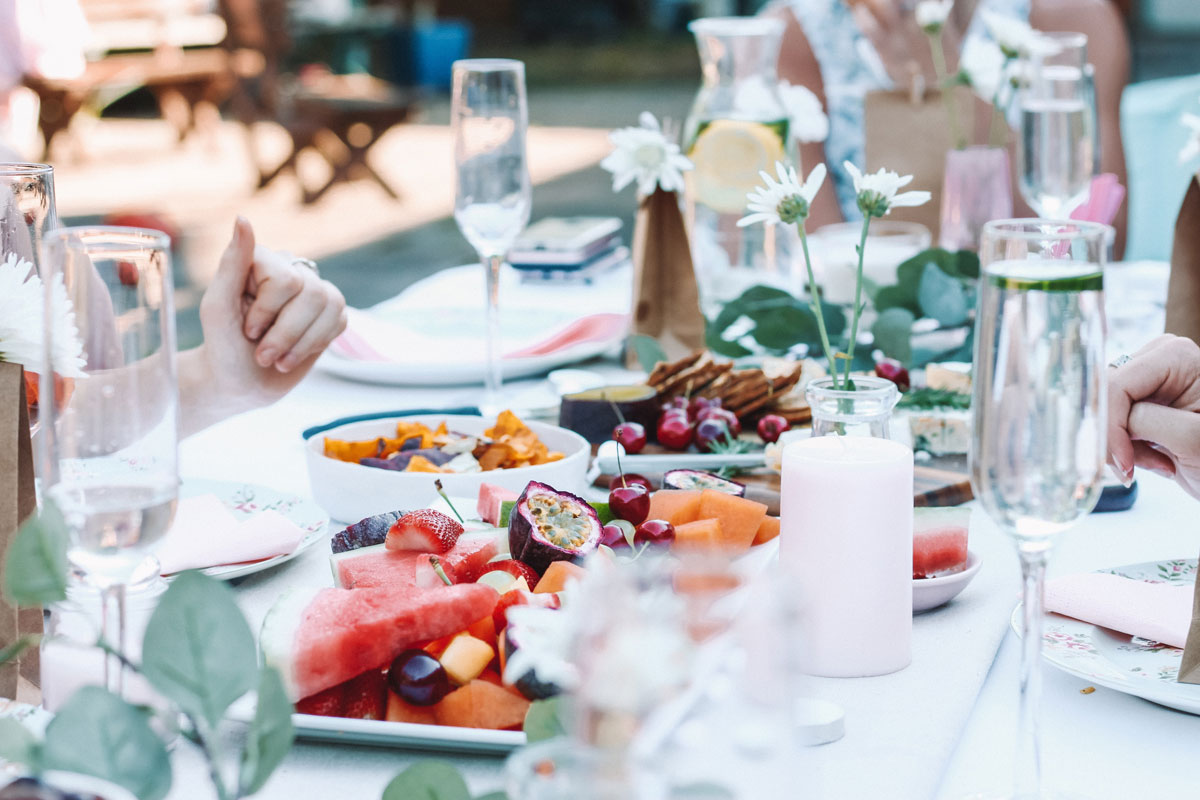
As with other astronomical events, the summer solstice helps us mark time and embrace the seasons. Not only is this an excellent opportunity to pause and recognize the bounty of nature, this annual event also provides space to take stock of our health, hopes, and lifestyle in order to appreciate what we have and to make any necessary adjustments.
The summer solstice is an ideal time to intentionally shift our attention to summer rhythms and herbal practices. This may include changing the foods we consume to lighter summer fare, establishing different exercise routines, adjusting our sleep patterns, and changing the herbal allies we employ. For example, Ayurveda generally recognizes summer to be dominated by pitta dosha, which is characterized by fire and water and has hot, sharp, and oily qualities. In order to keep pitta in balance it’s important to embrace cooling foods, herbs, and lifestyle practices. (Learn more about refreshing herbs to balance summer’s heat in our FREE ebook: Cooling Herbs for Hot Summer Days.) In late summer to early fall this will shift again and new adjustments should be made to maintain balance.
As you reflect on the changing seasons, ask yourself whether there are other areas in your life where you could seek and honor greater balance.
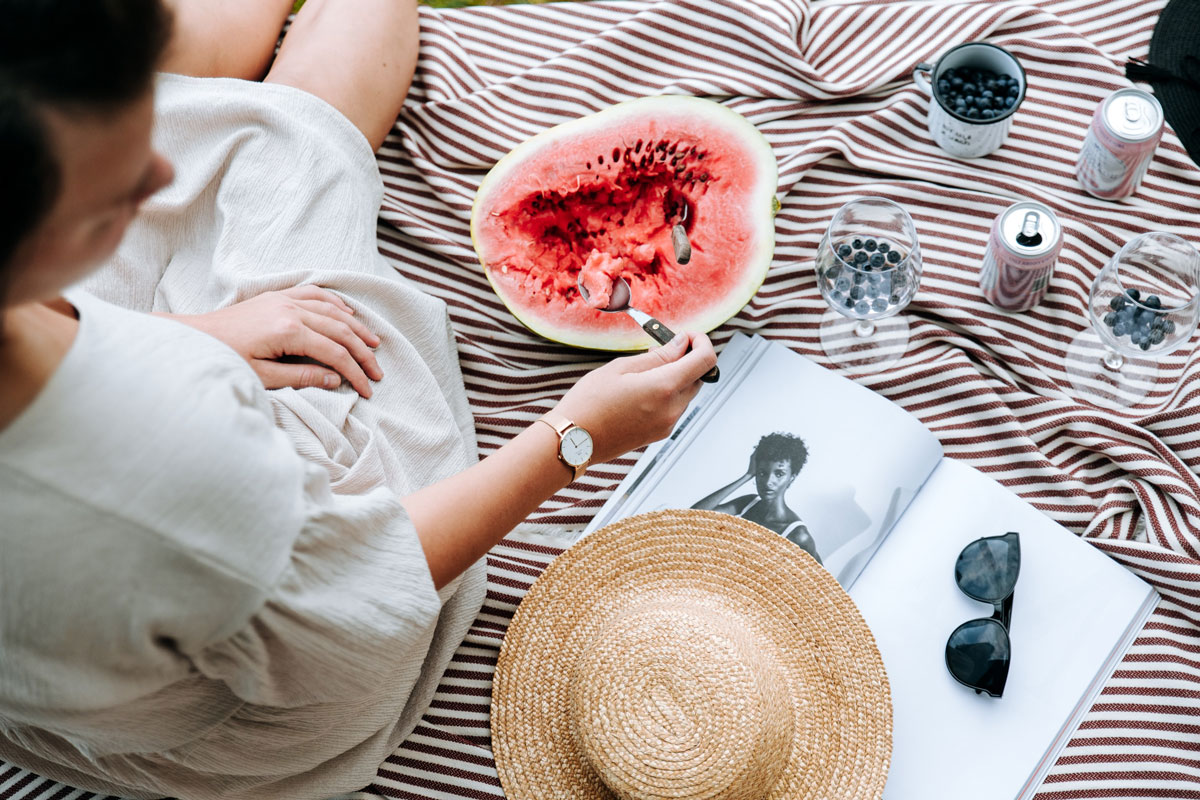
Ways to Honor and Celebrate the Summer Solstice
Some choose to honor the summer solstice with great exuberance and activity, while others seek a quiet, reflective occasion. There are many ways to observe this event; how you choose to do so is entirely up to you!
Below you’ll find a number of suggestions that can be incorporated into most any solstice celebration. These ideas can be enjoyed as stand-alone activities, or combined and interwoven to create a meaningful event.
Set Intentions and Make Goals

Many find the summer solstice an opportune time to think forward and make plans for the coming months. How do you intend to use the gifts of the summer months?
The warmer days and slower rhythms of summer provide a unique window of time to work on various aspects of our lives; whether it be cultivating an herbal plot, learning about foraging, or seeking to improve various aspects of ourselves, the summer season can be a growing season for all areas of life, not just our gardens.
There are a variety of ways to set intentions and make goals; many families enjoy making a summer bucket list of fun activities, while others prefer a quiet time to reflect and journal. There’s no wrong way! Do what seems best to you.
Express Gratitude
Expressing gratitude is good for the soul! The summer solstice is an excellent opportunity to reflect on all you are thankful for. Take a moment to jot down a few points of gratitude in a journal, create a piece of art that conveys your appreciation, or introduce a time of thankfulness-sharing among your friends and family during your solstice gathering or meal.
Have a Summer Solstice Spa Day
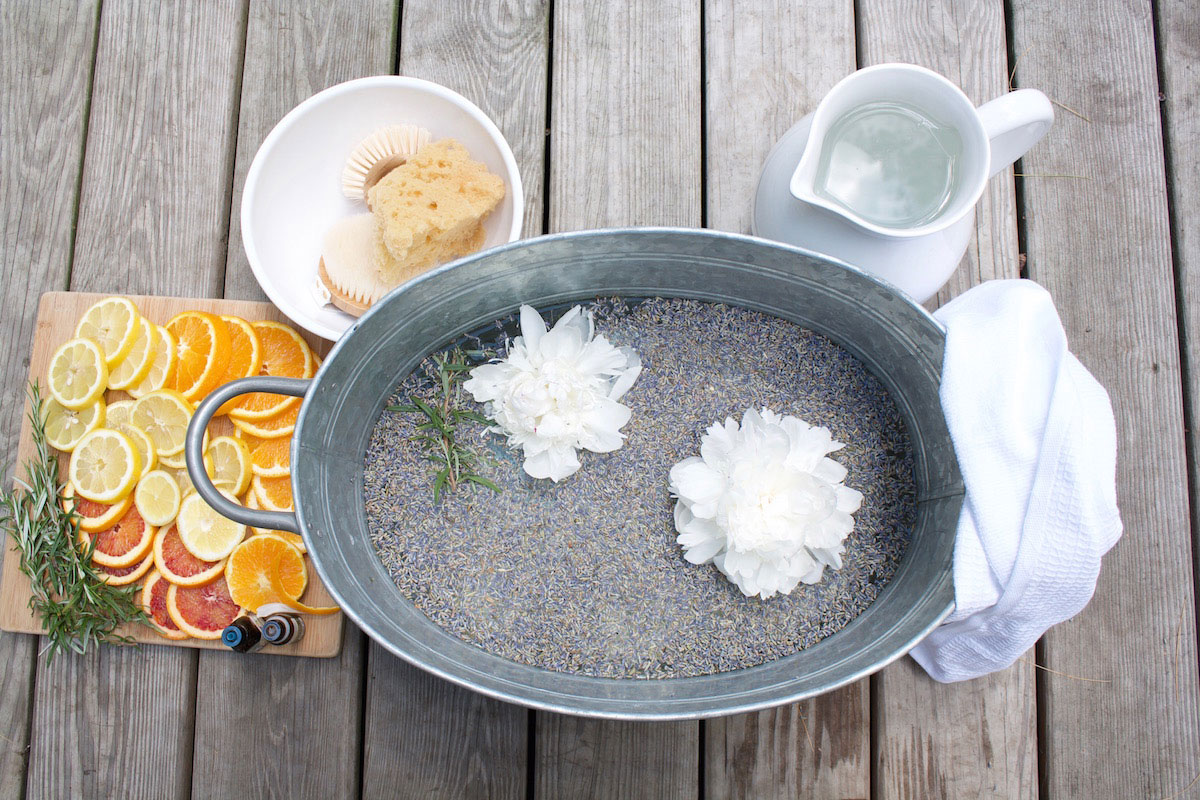
Why not practice a little self-care while acknowledging this special time? A simple, at-home spa day allows you to connect with plants and their many skin-soothing benefits, while experiencing deep relaxation and refreshment. Make it a quiet, personal event or share with friends and family for a fun afternoon together.
A spa day could include any combination of body scrubs, face masks, foot or bath soaks, nail treatments, hair masks, lip scrubs, or just about anything that sounds good to you!
Take the spa outside and enjoy some extra sunshine or the late evening light. Sip some fresh sun tea while soaking your feet or donning a botanical face mask to get the full spa experience.
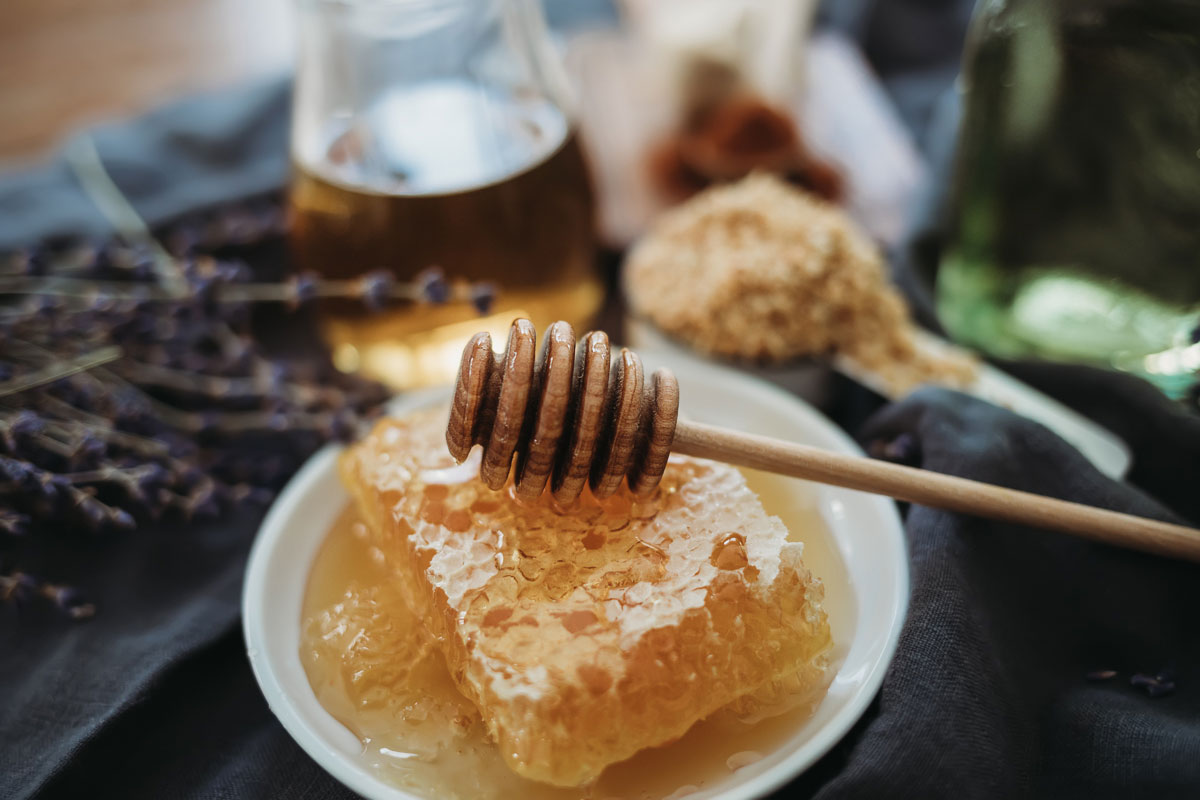
A few DIY spa treatments to consider:
- Floral Body Polish
- Herb-Infused Pedicure
- Summer Garden Bath Tea
- 8 DIY Herbal Face Mask Recipes
- DIY Honey Face Wash Recipes
- Helichrysum Skin Serum
- Summer Aromatherapy Mood Sprays (not a spa treatment per say, but a great way to enhance this ritual!)
Get Outside

There’s no better way to enjoy the summer solstice than to get outside and feel the sun on your skin. Rise early and watch the sunrise or stay out late and watch it set (then enjoy the stars). There are endless ways to enjoy nature—take a hike, swim, walk, forage for summer herbs, dig in the garden, or nap in a hammock.
Spending time outside on this particular day is a great way to acknowledge the change of season, welcome the light, and enjoy the rich, natural abundance that surrounds you. Besides this, spending time outside is great for stress reduction. And we can always use a little more of that!
Make Art
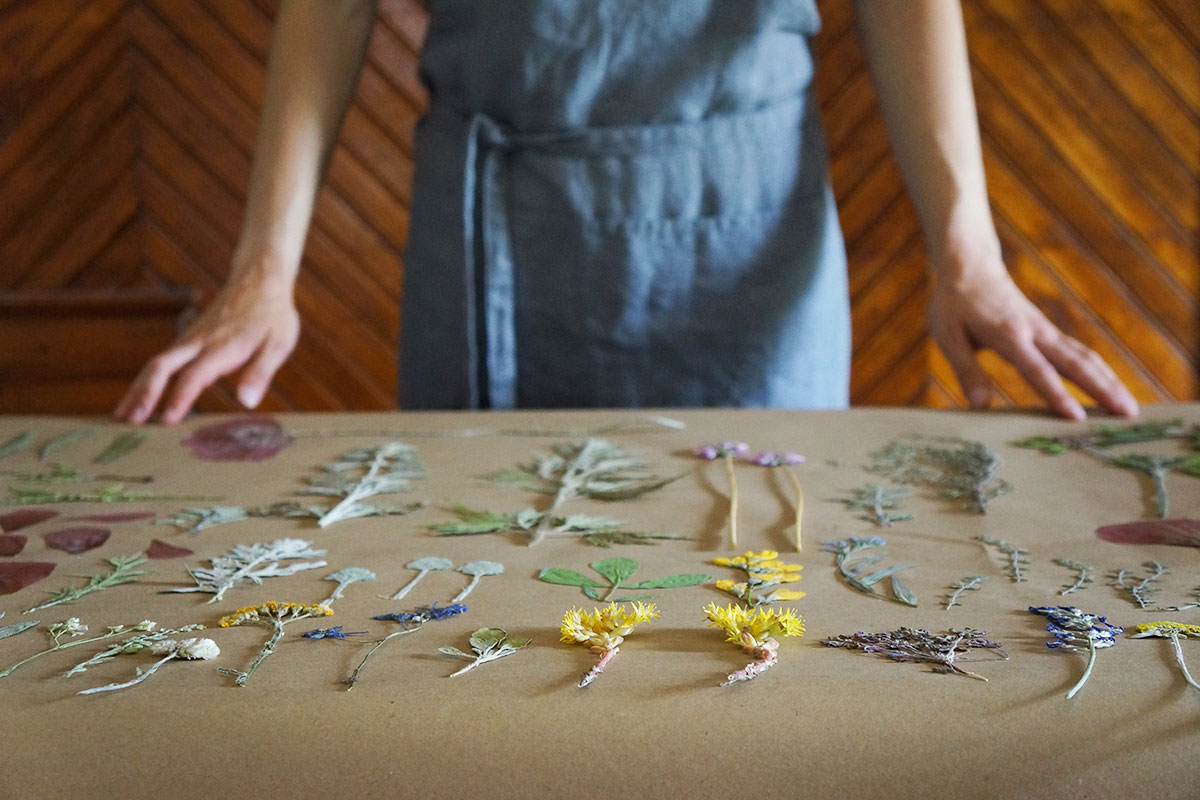
An afternoon or evening creating botanical art is a creative way to honor the summer solstice. Not only will you spend time working with herbal allies, but the tranquility of creating art also provides space for reflection. Making art can be a good time to think about goals and intentions or express gratitude. (You could even create botanical artwork that embodies or displays your intentions, goals, or thankfulness.)
Creating art can be as simple as getting out the watercolors and painting, sketching flowers, or coloring botanical coloring pages.If you’d like to dive a little deeper, you might enjoy experimenting with plant dyes or making handmade floral paper.
Ideas for botanical art projects:
- How to Make Framed Botanicals to Decorate Your Home
- DIY Hand Poured Herbal Candles
- DIY Herbal Wax Sachets
- How to Make a Fresh Rosemary Wreath
- 10 Herbal Crafts for Long Winter Days
The floral cookie recipe, below, is also a form of art!
Enjoy a Bonfire

Many ancient solstice celebrations included an element of fire. Some were intended to ward off evil spirits, while others were simply a source of joy and appreciation for the sun. A bonfire brings a warm, exciting element to a summer solstice gathering, but can also be a source of comfort and calm that encourages reflection and intention setting.
If the weather is too warm, or a fire is not possible in your location, consider lighting a special candle to mark the occasion. Candles evoke a sense of warmth and symbolize the light that the summer solstice brings.
Prepare a Summer-Themed Meal
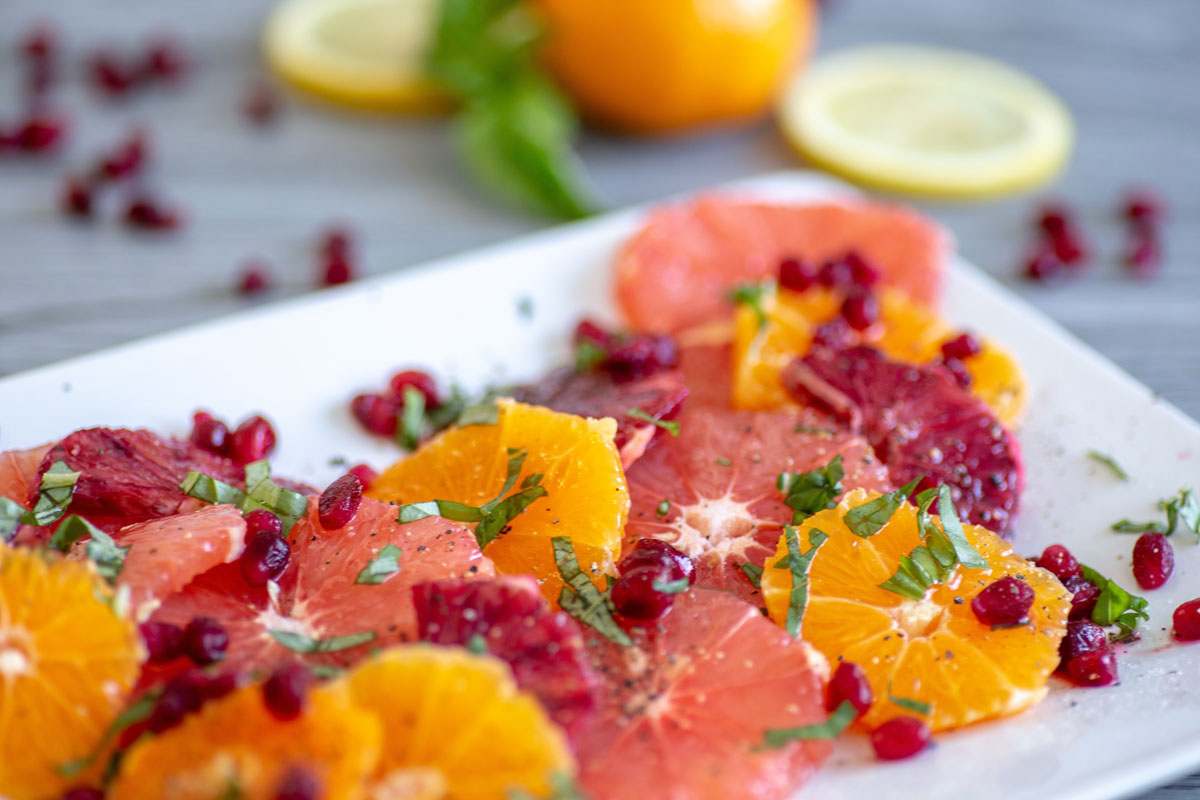
A celebratory meal is a lovely way to spend time with friends and family and mark this shift in the seasons. Throw a blanket on the grass and enjoy a picnic; or decorate a table for a more formal affair. Incorporate herbs and in-season fruits and vegetables for a unique and delicious feast.
Some herbal options for your meal or celebratory gathering include:
- Arugula, Peach, Radish, and Corn Salad
- Asparagus Tart with Pear Cream Ricotta and Balsamic Date Glaze
- Elderflower Fritters
- Rainbow Fruit Salad with Herbs and Flowers
- Adaptogen Bliss Balls
- Sunbutter Cookies
- Wildflower Jelly
- Lemon Balm and Lavender Scones
- Strawberry-Basil Infusion
- Cucumber-Mint Limeade
- Herbal Mocktail Recipes
- Floral Cookies (recipe below)
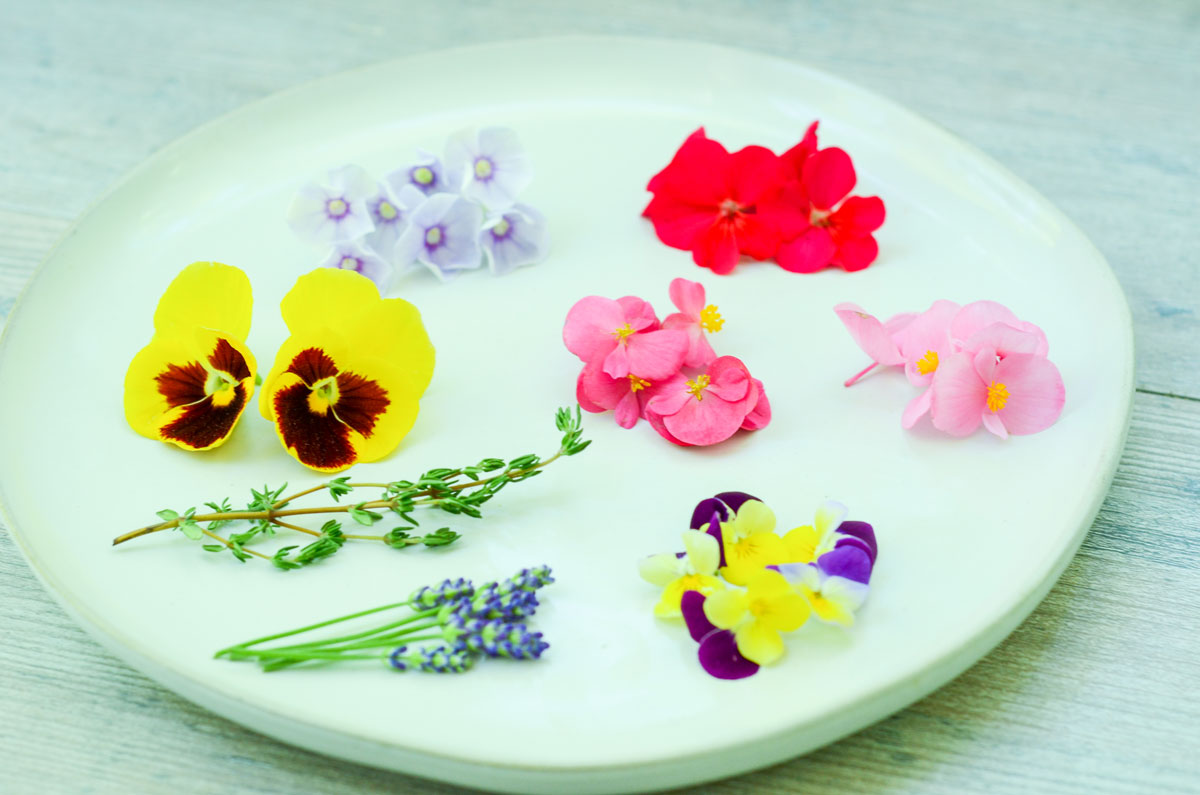
Summer Solstice Floral Cookie Recipe
This floral cookie recipe embraces the abundance and beauty of summer by incorporating herbs into the dough and adorning the top with edible flowers.
Edible flower options include:
- Begonias (Begonia cucullata)
- Borage (Borago officinalis)
- Dianthus (Dianthus caryophyllus)
- Impatiens (Impatiens walleriana)
- Johnny jump-ups (Viola tricolor)
- Pansy (Viola x wittrockiana)
- Perennial phlox (Phlox paniculata)
- Scented geraniums (Pelargonium spp.)
- Violet (Viola spp.)
- Nasturtium (Tropaeolum majus)
Edible flowers are not just for cookies; they make lovely cake decorations and add beauty when tossed into salads, too! Be sure the flowers you select are free of pesticides and have grown at least 50 feet from roadways.
1/4 pound (1/2 cup) butter, cubed, room temperature
1/3 cup sugar
2 tbsp honey
1 1/2 cups all-purpose flour (can substitute a gluten-free baking blend)
1/8 tsp sea salt
½ tsp lemon zest
½ tsp fresh thyme or lavender (optional)
¼ cup walnuts, pecans, or pistachios, finely chopped
1 egg white
Fresh edible flowers, see list above
- Place cubed butter and sugar in a large bowl. Beat until light and fluffy.
- Add honey and beat until just combined (about 30 seconds).
- Mix flour and salt in a small bowl until blended then add to the butter/sugar/honey mixture.
- Beat briefly to combine ingredients, then stir to blend further. Scraping the sides as needed.
- Sprinkle nuts, lemon zest, and herbs over the mixture and stir to distribute evenly.
- Knead with clean hands until a soft, smooth, dough forms.
- Wrap dough in plastic wrap and place in the fridge to chill for 15 minutes.
- Once chilled, remove dough from the fridge and place on a sheet of parchment paper. Press out until ¼ inch thick. You can also top the dough with parchment and roll with a rolling pin. (The top layer of parchment paper prevents the dough from sticking to the rolling pin.)
- Cut out cookies with a cookie cutter or small glass jar, or cut into shapes with a knife. Cookies should be approximated 2 inches wide.
- Line a cooking sheet with parchment paper and place cut cookies on the lined baking sheet.
- Preheat the oven to 375 degrees Fahrenheit.
- Whisk egg white and set aside.
- Gently press sturdy flowers and herbs (such as lavender and thyme) into dough. If using more delicate flowers, brush the cookie lightly with egg white before pressing petals into the dough (this will help the flower adhere to the surface).
- Bake for 10-12 minutes on the center rack of the oven.
- Remove from the oven when edges begin to turn golden. Immediately transfer to a wire rack to cool.
- Enjoy these delicious floral cookies as part of your summer solstice celebration or any other day that calls for a special herbal treat!
In Closing,
The ritual of honoring and celebrating the summer solstice can be an enjoyable experience for all. An opportunity to renew commitments and establish new habits, this occasion also allows for the expression of gratitude and appreciation of nature’s summer gifts. Whether you honor summer solstice in quiet solitude or enthusiastic celebration, by acknowledging this auspicious time you are sure to mark the beginning of summer in a meaningful way.
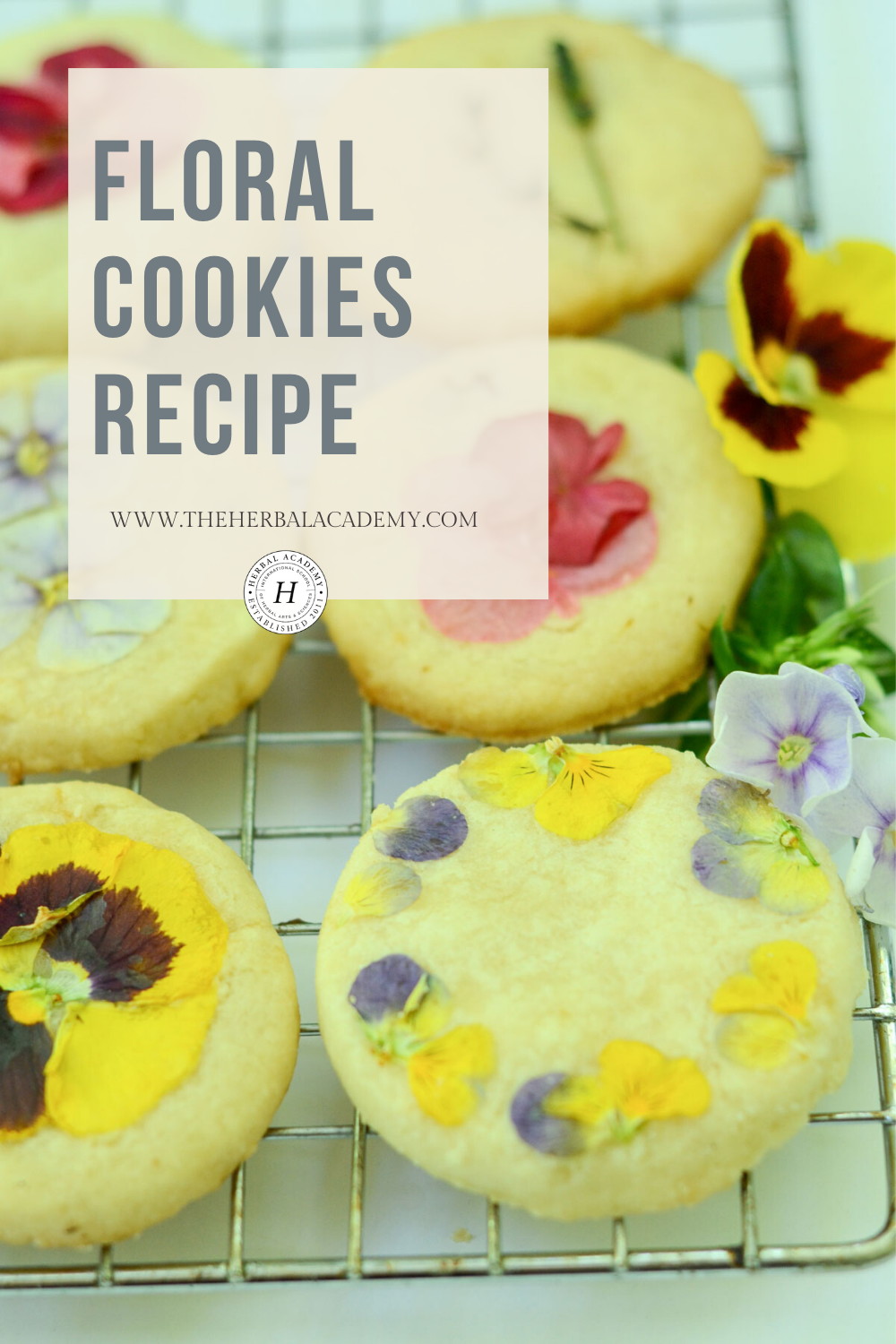
REFERENCES
Forest, D. (2015). The magic of the summer solstice. London, United Kingdom: Watkins Publishing.
Fulton, C. (n.d.). The facts about midsummer in the Nordic countries. Retrieved from https://www.nordicvisitor.com/blog/celebrating-the-solstice-midsummer-in-the-nordics/
History.com Editors. (2017). Summer solstice. Retrieved from https://www.history.com/topics/natural-disasters-and-environment/history-of-summer-solstice
Old Farmer’s Almanac. (2020). Summer solstice 2020: The first day of summer. Retrieved from https://www.almanac.com/content/first-day-summer-summer-solstice








